
This resouce contains a lesson plan to use with The Albertosaurus Mystery written by Philip Currie.
- Subject:
- English Language Arts
- Material Type:
- Lesson Plan
- Provider:
- Achieve the Core
- Author:
- Cincinnati District
- Date Added:
- 02/26/2019

This resouce contains a lesson plan to use with The Albertosaurus Mystery written by Philip Currie.
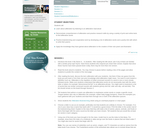
In this lesson, students overcome their fears by using a traditional poem to teach students about alliteration. After reading the book, A My Name Is... by Alice Lyne, students use a variety of print and online resources to brainstorm their own alliterative word lists. They then create a poetry link that uses the traditional poem they have read together as a framework for their own poems.

In this lesson, students explore their towns using a variety of print and nonprint resources. By looking at brochures and other informational tools, students learn about some of the purposes for which people read and write. They also practice writing for a specific audience, revising their writing, and working collaboratively to create a brochure for new students just moving into town.
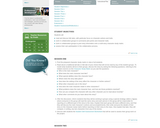
In this lesson, collaborative groups will read a variety of American tall tales, then report elements of their story to the whole class. Students add story information to a collaborative, whole-class character study matrix that summarizes all the stories. In a writing activity, students compare two characters of their choice. The lesson process is applicable to any set of related texts.
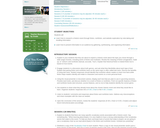
n this lesson, students explore a historic event in depth by reading fiction and nonfiction literature. Then, to enhance and extend the reading experience, students participate in website exploration and virtual field trips. Throughout the process, students gather facts and relevant information, which they later organize and present to the class. This lesson is easily adaptable to accommodate a wide range of historic events, instructional objectives, and grade levels.
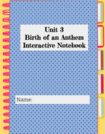
In this lesson, students will work interactively through the Hyperdoc using the story Birth of an Anthem in their Wonders Literature Anthology. The lesson will begin with discussion about what an anthem is and how it could represent a country, place, etc while providing students with background knowledge of the Star Spangled Banner by watching the youtube link below. As students complete both readings of Birth of an Anthem, students will work through a hyperdoc focusing on various reading skills; identifying key ideas and details, summarizing, analyzing text structure (cause and effect).
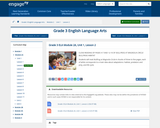
In this lesson, students read Bullfrog at Magnolia Circle in chunks of three to five pages, each of while corresponds to a main idea about adaptations: habitat, predators and prey, and life cycle.
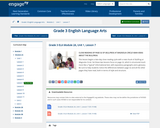
In this lesson, students This lesson begins a two-day close reading cycle with a new chunk of Bullfrog at Magnolia Circle. Yet these two lessons focus on page 32, which is structured much more like a "typical" informational text, with expository paragraphs and a glossary.
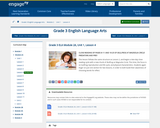
This lesson follows the same structure as Lesson 2, and begins a two-day close reading cycle with a new chunk of Bullfrog at Magnolia Circle. This time, the focus is on bullfrog reproduction and life cycle, and physical characteristics. Students again linger on just one section for two lessons, in order to both build their awareness of choosing words for effect.
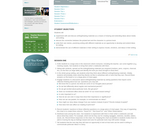
In this lesson, students will see how artistic materials can extend knowledge. This lesson provides opportunities for students to explore and experience the meaning potential of everyday writing and drawing tools in their own writing. The lesson can adapted for older students.

Students learn that voluntary exchange is based on the fact that both sides expect to gain from trade and that exchange is made easier by the creation and use of money. Individuals and societies organize themselves to answer basic questions such as, How will goods and services be produced?
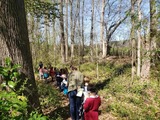
The North Carolina Museum of Natural Science created this resource as part of an online workshop series, but you are welcome to use or modify it for your classroom. It includes a video and written directions for creating nature journals and tips for incorporating them into your classroom. For information on taking any the Nature Neighborhood online workshops for CEUs or EE credit, visit: https://naturalsciences.org/learn/educators/online-workshops.

The goal of the first component of this unit design is to connect new learning and language to prior knowledge and build students’ background and interest of global poverty. They will begin to investigate the world and recognize perspectives by learning and thinking about the essential questions for the unit: What is poverty? What are some causes of poverty? What are the effects of poverty of children? Students are engaged in a variety of visual literacy tasks where speaking, listening and writing begin to occur through the support of graphic organizers and prompt cards with sentence frames linked to the speaking and listening standards (Zwiers 2008). This lesson was developed by Karie Gregory as part of their completion of the North Carolina Global Educator Digital Badge program. This lesson plan has been vetted at the local and state level for standards alignment, Global Education focus, and content accuracy.

In this lesson students are ready to share their knowledge of poverty related issues and stories with their peers. Teams continue to work with their poverty article from lessons 4 and 5 in an extension project using technology. The goal of this project is to have students identify the most important pieces of information from their article and communicate this in a digital format. The first part of this lesson allows students to plan a news segment with information and images to be video recorded and compiled for a final news report. They will work together to create teleprompter cards and choose and save images related to their articles using Google images to prepare for the project. Finally in Part 2 (Lesson 7), students will compose the video. A rubric is also provided to students to provide guidance and feedback as they create their portion of the news report (“Using Rubrics” 2016). This lesson was developed by Karie Gregory as part of their completion of the North Carolina Global Educator Digital Badge program. This lesson plan has been vetted at the local and state level for standards alignment, Global Education focus, and content accuracy.

The final component of this unit provides students with the opportunity to write an essay explaining poverty. They are prompted to explain some causes, effects, challenges, emotions and finally their opinion telling the most important thing people can do to overcome poverty. A writing essay rubric is used to guide, revise and edit their writing. Throughout this unit, students have learned about poverty from online sources, news articles, fiction texts and personal experiences. Education has been a common hope or theme for people living in poverty. One of the goals of this assignment is to assess if students can recognize this as the most important idea and if they can support their ideas with reasons or evidence from their learning. This lesson was developed by Karie Gregory as part of their completion of the North Carolina Global Educator Digital Badge program. This lesson plan has been vetted at the local and state level for standards alignment, Global Education focus, and content accuracy.

In the second part of reading informational text students give their poster presentations in teams from GEDB Tchr Capstone: Lesson 4. Students will spend the second part of this lesson moving through rotations to record all new learning from the posters onto a process grid. By recording information on a grid students continue to practice classifying key details about four different poverty cases and points of view of different groups living in poverty around the world. As they rotate to each poster students also practice academic language, posititve interdependence and create a pre-write organizer for informative writing (see resource link) ("OCDE Project GLAD 2-day Research and Theory Workshop" 2015). This lesson was developed by Karie Gregory as part of their completion of the North Carolina Global Educator Digital Badge program. This lesson plan has been vetted at the local and state level for standards alignment, Global Education focus, and content accuracy.
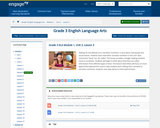
This lesson helps students move to nonfiction. Students will begin to think about how they can collect information from different types of texts.
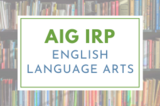
This activity for gifted learners might serve as part of a larger poetry unit. Students will take part in close readings of a variety of poems throughout the unit. This research project should be assigned to students who demonstrate solid understanding of poetry (figurative language, structure, meaning) and are ready for a challenge as they work individually, or with a partner, to close read “Something Told the Wild Geese” by Rachel Field and then investigate…What is the “something”? Using the information they discover in their research, they will create a complementary poem to “Something Told the Wild Geese,” explaining the scientific principal behind each stanza in verse which they will read to the class. This lesson was developed by NCDPI as part of the Academically and/or Intellectually Gifted Instructional Resources Project. This lesson plan has been vetted at the state level for standards alignment, AIG focus, and content accuracy.
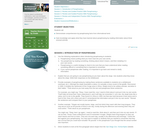
Paraphrasing helps students make connections with prior knowledge, demonstrate comprehension, and remember what they have read. Through careful explanation and thorough modeling by the teacher in this lesson, students learn to use paraphrasing to monitor their comprehension and acquire new information. They also realize that if they cannot paraphrase after reading, they need to go back and reread to clarify information. In pairs, students engage in guided practice so that they can learn to use the strategy independently. Students will need prompting and encouragement to use this strategy after the initial instruction is completed. The lesson can be extended to help students prepare to write reports about particular topics.
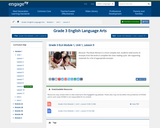
In this lesson, students identify the main message or lesson of a story using key details from the text and effectively participate in a conversation with peers and adults.